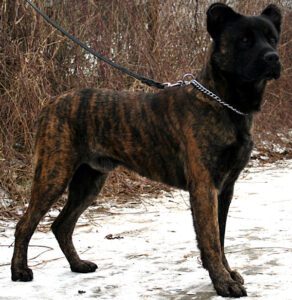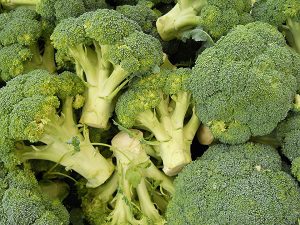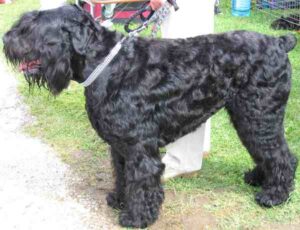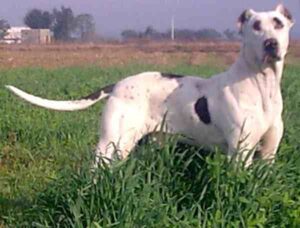The Dandie Dinmont Terrier dog is a small breed of dog in the terrier family. It was originally bred to hunt otter and badger. The breed is also known by it’s common nickname ‘Dandie Hindlee Terrier‘. It is a very beautiful breed.
The Dandie Dinmont Terrier was originated from Scotland. And it is nicknamed the ‘gentleman’ of the terrier family. The breed is calm and reserved, yet retain the terrier tenacity and love of the hunt.
There are records of the Dandie Dinmont Terrier dogs being bred in the early 1700s, but stories about how the breed was developed are conflicting. Some think they were a cross between Otterhounds and local terriers in the Border Country between Scotland and England.
Others think the breed evolved from the rough-haired terriers common on farms. Yet others believe the breed was developed by crossing terriers with Dachshunds.
Whichever theory one wants to believe, the fact is that Dandie Dinmont Terriers are one of the oldest distinct breeds of terriers. The Dandie Dinmont Terrier has not changed much unlike many breeds since the early 1700s.
The Dandie Dinmont Terrier dog breed was first registered with the AKC (American Kennel Club) in 1888. And it was recognized by the UKC (United Kennel Club) in 1918.
During the Second World War many kennels were dispersed and the dogs destroyed, due to both the lack of food caused by rationing and that of manpower.
Following the war several kennels led the way to re–establishing the breed including the Bellmead Kennels, located first in Surrey before later moving to Old Windsor. Dandies continued to be bred up at Bellmead up until the early 1990s, when it passed into the hands of Battersea Dogs and Cats Home.[1]
Today the Dandie Dinmont Terrier is one of the rarest and most endangered of all purebred dogs. The Kennel Club in England has put it on their list of endangered native breeds and many fear that it will become extinct.[2]
Dandie Dinmont Terrier Dog Characteristics
The Dandie Dinmont Terrier dogs are smaller in size, but they are very beautiful. They have short legs with an elongated body.
It has pendulous ears, unusually among Scottish terrier breeds. The neck is muscular, having developed from the breed’s use against larger game.
The Dandie Dinmont Terrier dogs have a silky coat which forms a topknot on top of the dog’s head. The breed has a similar body shape to the Skye Terrier, but the Skye’s coat is thicker and longer.
The coat of the Dandie Dinmont Terrier dog comes in two color ranges, pepper and mustard. Mustard can vary from reddish brown to fawn with the head appearing to be almost white. While the pepper ranges from dark blueish black to very light silvery gray.
The legs and feet are typically of a darker color with the lighter color on the body slowly blending into that on the legs.
The depth of the coat can reach up to 2 inches. The color of the coat is generally set by the time the dog reaches eight months of age, but the dogs will continue to mature physically until around two years old.
Average body height of the mature dog is between 8 and 11 inches at the withers. And average live body weight of the mature dog is between 8.2 and 10.9 kg.
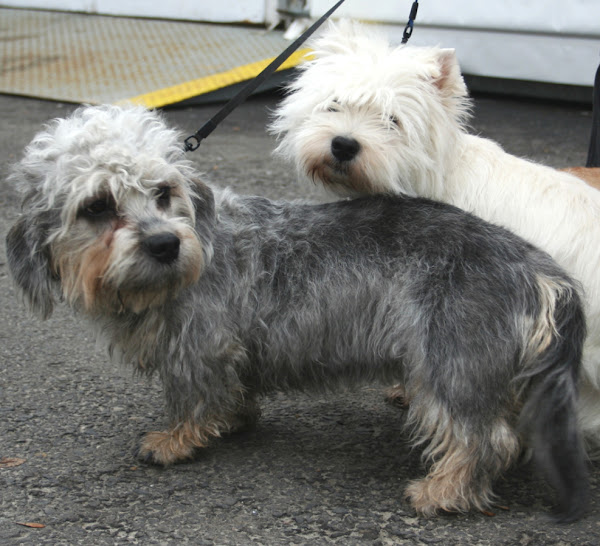
Temperament
The Dandie Dinmont Terrier dog breed is tough but usually friendly and is suitable for older children. These dogs make both good companion and a guard dog but is among the most docile of the terrier breeds.
They are quite undemanding of their owners. However, they are known for their ability to dig large holes in a short space of time.
The Dandie Dinmont Terrier dogs can be trained to be good with cats but should not be trusted around smaller animals such as hamsters or rats.
The breed is described as being ‘very game’, in that they are prone to challenging other animals, including foxes and some cases other dogs.
Although temperament of the dogs is affected by a number of factors, including heredity, training and socialization. Puppies with nice temperaments are curious and playful, willing to approach people and be held by them.
Like other dogs, the Dandie Dinmont Terrier dogs also need early socialization. Exposure to many different people, sight, sounds and experiences are great ways to socialize them, especially when they are young.
Lifespan
Average lifespan of the Dandie Dinmont Terrier dog is between 11 and 13 years.
Feeding
How much a mature dog eats depends on it’s size, age, build, metabolism and activity level. Dogs are individuals, just like people, and they don’t all need the same amount of food.
The Dandie Dinmont Terrier dogs are smaller in size, and they are moderately active. So, their diet should be formulated for a smaller sized breed with average exercise needs.
Generally 1 to 1.5 cups of high quality dry food will be enough for a mature dog daily. You can also consult with a vet in your area for better feeding recommendations.
Caring
Taking good care of the animals is very important for raising Dandie Dinmont Terrier dogs. You should always keep up with your dog’s regular veterinary checkups to detect any health concerns early. Your vet will be able to help you to develop a caring routine that will keep your dog healthy.
The Dandie Dinmont Terrier dogs can adapt themselves to both city and country life as long as they get quality time with their people. They can live in smaller quarters, although they need to be walked regularly or have a yard to play in.
Generally two 20 to 30 minute walks daily or play time in the yard will keep them happy. Digging is in their blood, like all terriers. So either supervise outdoor playtime or provide them with their very own digging spot.
Grooming these dogs is very easy. And as you groom, check for sores, rashes or signs or infection such as redness, tenderness or inflammation on the skin, in the ears, nose, mouth and eyes, and also on the feet.
Health
The Dandie Dinmont Terrier dogs are generally healthy. But like all other dog breeds, they are also prone to certain health conditions.
Their common health problems include cheyletiella yasguri mites, epilepsy, glaucoma and spinal problems. Always try to keep good contact with a vet in your area.
| Breed Name | Dandie Dinmont Terrier |
| Other Names | Also known by it’s common nickname ‘Dandie Hindlee Terrier’ |
| Breed Size | Small |
| Height | Between 8 and 11 inches at the withers |
| Weight | Between 8.2 and 10.9 kg |
| Good as Pets | Yes |
| Climate Tolerance | All climates |
| Color | Pepper or mustard |
| Lifespan | Between 11 and 13 years |
| Good for Children | Yes |
| Rarity | Common |
| Country/Place of Origin | Scotland |



